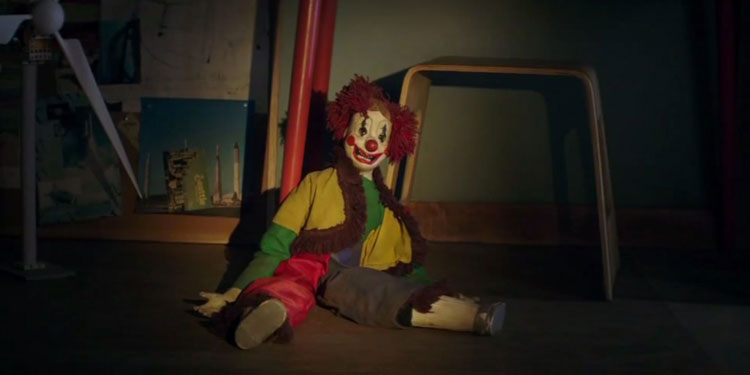It’s interesting that Poltergeist came out the same weekend as highly anticipated Mad Max: Fury Road. The two movies couldn’t be more different from one another, yet both of the original films came out within three years of each other and appeal to distinctive genre fans.
Similar to how 2015’s Mad Max will likely attract older and young fans of the original franchise, the Poltergeist remake will likely attract horror buffs and fans of the 1982 Tobe Hooper classic. However, unlike the new Mad Max’s ability to entertain viewers unfamiliar with Miller’s post-apocalyptic universe, the new Poltergeist might alienate viewers who have never seen Hooper’s version, viewers who will preconceive this remake as just another cheesy, sub-par, derivative summer horror film, a “Sam Rockwell needs a new house” movie.
Which brings us to the central question: does Poltergeist do justice to its source material?
The answer is yes and no. There’s plenty to like about Poltergeist, and it certainly gets off on the right foot, despite losing momentum and even logic at the one-hour mark.
First, the good news. So many of the strategic shots in Poltergeist serve as a wink-wink to audience members familiar with the original. The first scene opens with flashes of television static, a close up of jerky pixels on a screen. As the camera zooms out we see that the multi-colored squares make up the screen of a tablet operated by the Bowen family’s middle-child, Griffon, playing a video game in which he blasts away skeletal-looking zombie bad guys (foreshadowing!). The film does an awesome job throughout with updating the original source material, largely centered on the family television of course, for a twenty first century audience, taking advantage of current technology like iPhones and Skype. Director Gil Kenan establishes immediately, for viewers unfamiliar with the plot, that electricity will play a major role in the ghosts’ communication with the Bowens. Kenan eerily providing a bird’s eye view of the not-so-perfect suburbs to which Eric (Sam Rockwell) and Amy (Rose Marie Dewitt) move their children after Eric is laid off from his job.
As the family becomes acclimated to their new house (which they are forced to move into hurriedly) the general tone of the movie is humorous and light-hearted, thanks to Rockwell’s steal-the-show performance. In fact, if Poltergeist succeeds in any respect, it’s because the family comes off as genuine and authentic, thanks to the excellent dialogue and strong performances from its actors.
As the paranormal occurrences escalate (mostly witnessed by the cowardly Griffin, scared to death by objects flying across bedrooms, his little sister talking to unseen entities, a sinister tree scratching at his attic’s window, and a box of clowns conveniently placed in his closet), the parents are oblivious to the fact that anything out of the ordinary is present in their new home. This is where the film succeeds the most; the build up to catastrophe and the general spookiness and pranking by the ghosts maintains our interest and keeps us watching in eager anticipation.
However, once situations reach their inevitable conclusion and climax, the film begins to falter. The famous tree incident, for example, comes off as rushed, as does adorable six year old Maddy’s abduction into the closet and subsequent contact through the TV. It’s almost as if, after these events, necessary parts of the movie were edited out. The Bowen parents’ acceptance of their little girl vanishing into another spiritual dimension comes off as forced and undeveloped. Even Sam Rockwell seems to struggle with his character’s understanding and interpretation of events, toning down his sarcastic, humorous characterization to stand in the background and allow new characters (not as intriguing or well-developed)– paranormal investigators Dr. Powell (Jane Adams) and her ex-husband and television personality Carrigan Burke– work to bring Maddy back from the great beyond.
But perhaps the biggest mistake Poltergeist makes is utilizing CGI to personify the poltergeists into a bunch of identical, screeching gangly and grabby skeletons. By actually showing us the dimension of the trapped souls (which was not in the original), so much is taken away from the original story and as little is left to the viewer’s imagination. Even though the script by David Lindsay-Abaire (who wrote the family tragedy Rabbit Hole) is quite taut and features rather sweet, genuine moments of familial unity and love, it remains a downright shame that the family’s togetherness couldn’t be challenged more by the sheer horror and shock of their supremely supernatural situation. For a horror film, the entire movie just feels so light.
That being said, Poltergeist is still worth a watch for its completely out-there originality, references to the original classic, and new take on old scenes (you won’t see power drills the same way again). Just be sure you leave your disbelief at the front doors in order to bask in this truly crazy, original ghost story.






